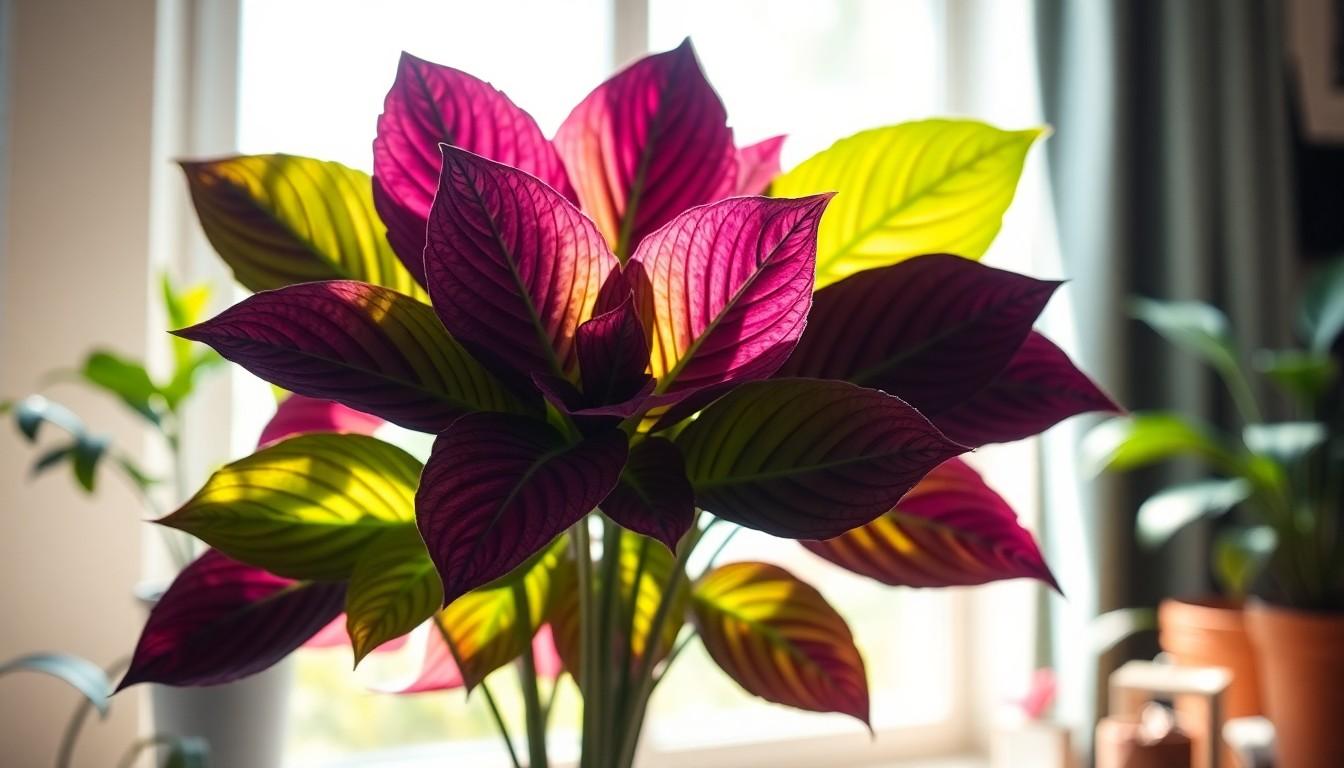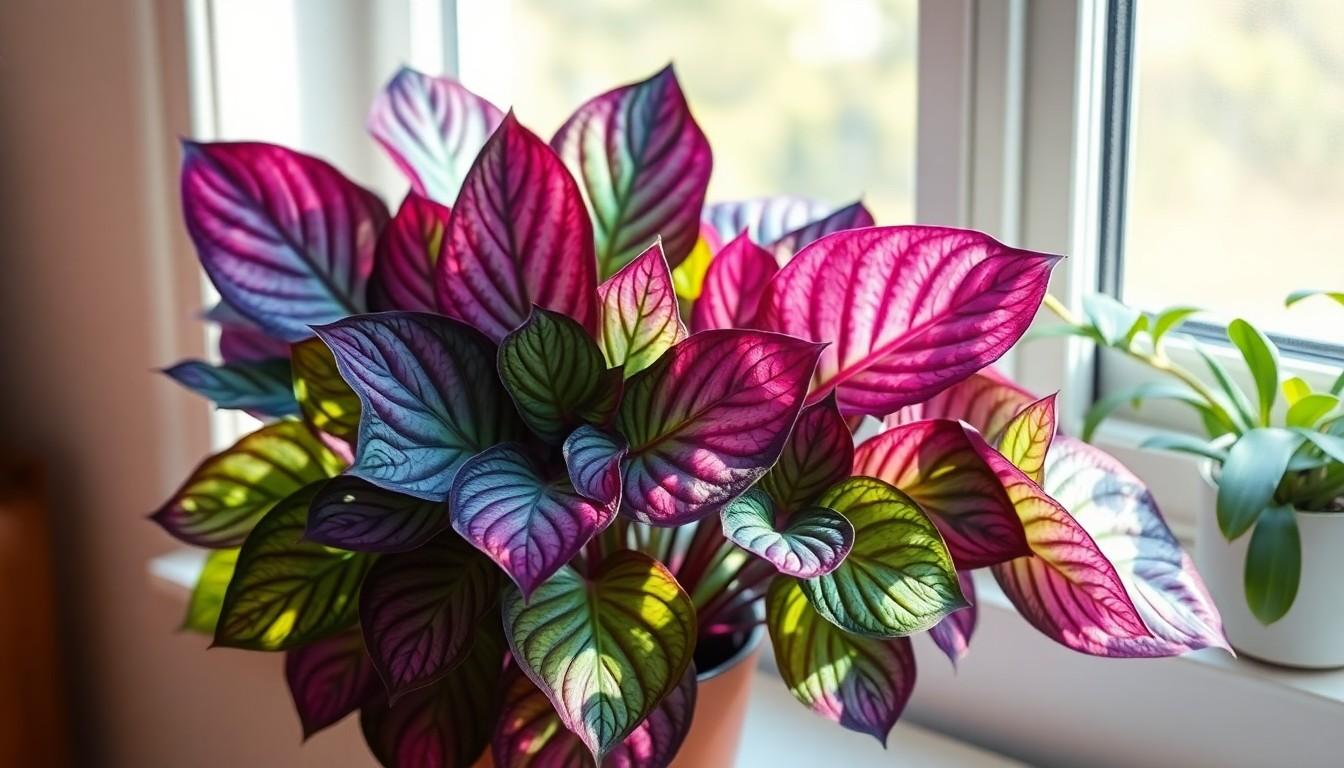Looking to add a splash of vibrant color to your indoor garden? Meet the Persian shield plant, the diva of houseplants that’ll have your friends green with envy. With its stunning iridescent leaves showcasing shades of purple, green, and silver, this plant doesn’t just sit pretty; it demands attention.
Persian Shield Plant Care
The Persian shield plant, known scientifically as Strobilanthes dyerianus, captivates attention with its unique foliage. Its leaves display an intriguing blend of iridescent purple, rich green, and shimmering silver, contributing to a vibrant indoor atmosphere. The stunning coloration varies depending on light exposure, with bright indirect light enhancing its visual appeal.
This plant thrives in conditions resembling its native tropical habitat. Warm temperatures ranging from 65°F to 75°F promote healthy growth. Persian shields prefer high humidity levels, ideally between 50% to 70%. For optimal development, misting the leaves or placing a humidifier nearby supports their preference for moisture.
Regarding soil, well-draining potting mixes work best, allowing excess water to escape. A mixture of potting soil, peat, and perlite ensures adequate drainage. Watering frequency needs adjustment based on environmental conditions, but allowing the top inch of soil to dry before watering prevents root rot.
Fertilizing every four weeks during the growing season aids nutrient uptake, enhancing growth. A balanced liquid fertilizer diluted to half strength suffices. Pruning encourages bushier growth and removes any dead or yellowing leaves, which helps maintain an attractive plant appearance.
Pests such as aphids and spider mites may pose risks, requiring regular inspections for early detection. Utilizing insecticidal soap provides a non-toxic solution to manage pest issues. In summary, the Persian shield plant serves as a stunning addition to any plant collection, requiring specific care to thrive.
Ideal Growing Conditions
The Persian shield plant flourishes under specific conditions that enhance its vibrant appearance. Understanding these requirements ensures optimal growth and stunning foliage.
Light Requirements
Bright, indirect sunlight promotes the Persian shield’s vivid leaf colors. Direct sun exposure may scorch the leaves, leading to damage. A location near a window with filtered light suits the plant best. Inadequate light creates weakened growth and dull coloration. Regularly adjusting the placement can help balance light exposure throughout the year. Grow lights can supplement natural light if necessary, especially during shorter days.
Temperature and Humidity
Temperatures between 65°F and 75°F create the perfect environment for the Persian shield plant. It’s crucial to avoid cold drafts, as they can stress the plant, resulting in stunted growth. Maintaining humidity levels between 50% and 70% is essential for overall health. Using a humidifier or placing a pebble tray with water can help achieve desired humidity. Regular misting can also benefit the plant, especially in dry indoor environments. Monitoring these conditions leads to a lush and vibrant plant.
Watering and Fertilizing Guidelines
Proper watering and fertilizing practices ensure the vibrant health of the Persian shield plant, enhancing its stunning foliage.
Watering Frequency
Watering occurs when the top inch of soil becomes dry. Heed changes in temperature and humidity; warmer environments may necessitate more frequent watering. It’s crucial to avoid soggy soil, as overwatering can cause root rot. Maintaining a consistent schedule aids plant health. Checking soil moisture with fingers helps determine the need for watering.
Types of Fertilizers
Utilizing a balanced liquid fertilizer promotes growth during the active growing season. For best results, opt for fertilizers with equal ratios of nitrogen, phosphorus, and potassium, such as 10-10-10 formulations. Applying this diluted fertilizer every four weeks supports robust growth. Organic options, like fish emulsion or seaweed extracts, also enhance nutrient availability, improving overall vitality. Ensure the chosen fertilizer suits indoor plants to prevent any adverse effects.
Pruning and Propagation Techniques
Maintaining the Persian shield plant involves specific pruning and propagation methods. These techniques enhance growth and encourage vibrant foliage.
Pruning Tips
Regular pruning promotes bushier growth and maintains an appealing shape. Trimming back leggy stems helps to encourage new shoots. Focus on removing any dead or yellowing leaves, as this improves air circulation. Use clean, sharp scissors to prevent infection and trauma to the plant. Aim for pruning every few months during the growing season, especially in spring and summer. This timing maximizes growth potential. Besides, pruning allows for more light penetration, which further enhances the striking leaf colors.
Methods of Propagation
Propagation can occur through stem cuttings, making it straightforward and effective. Cut healthy stems about four to six inches long, ensuring each includes several leaves. Remove the lower leaves to avoid rot when placing the cuttings in water or a moist potting mix. Keeping the cuttings in a warm and bright location encourages root development. Roots typically take one to three weeks to form, depending on conditions. After roots establish, transfer the cuttings to a potting mix that drains well. This method enables enthusiasts to expand their collection and share the beauty of the Persian shield plant.
Common Pests and Diseases
Persian shield plants can encounter several pests and diseases that may hinder their growth. Identifying these problems early ensures the plant remains healthy and vibrant.
Identifying Problems
Aphids often cluster on new growth, sucking sap and leading to wilting or yellowing leaves. Spider mites create fine webs and cause a mottled appearance on leaves, indicating a possible infestation. Mealybugs, small and white, can be found in leaf axils or on stems, leaving behind sticky residues. Fungal infections manifest as dark spots or powdery mildew on leaves, thriving in overly damp conditions. Observing these signs helps in diagnosing the issue and taking appropriate action.
Treatment Options
Managing pests effectively involves a few strategies. Hosing off affected plants with water can eliminate many pests quickly. Insecticidal soap treats aphids and mealybugs, offering a safe solution. Spider mites respond well to neem oil, which disrupts their life cycle. For fungal problems, removing affected leaves and applying fungicide prevents the spread of disease. Regular monitoring and treating infestations promptly keep the Persian shield plant thriving.
Stunning Foliage and Unique Color
Caring for the Persian shield plant can be a rewarding experience. With its stunning foliage and unique color palette it adds a touch of elegance to any space. By maintaining the right temperature and humidity levels along with proper watering and fertilization techniques, this plant can thrive beautifully. Regular pruning not only encourages bushier growth but also keeps the plant looking its best.
Being vigilant about pests and diseases ensures the longevity of the Persian shield. With a little attention and care, this plant can become a vibrant centerpiece in any indoor garden. Embracing these care tips will help any plant enthusiast enjoy the beauty of the Persian shield for years to come.


